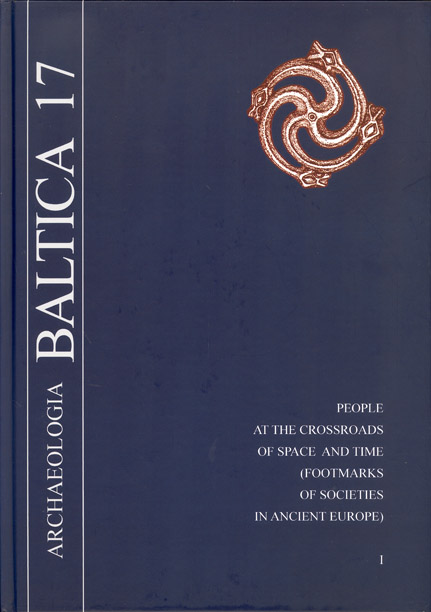Volume 17 (2012): People at the Crossroads of Space and Time (Footmarks of Societies in Ancient Europe) I, November 2012

Order by:
Pub. online: 20 Dec 2012
Type: Introduction
 Open Access
Open Access
Journal:
Archaeologia Baltica
Volume 17 (2012): People at the Crossroads of Space and Time (Footmarks of Societies in Ancient Europe) I, pp. 7–12
Pub. online: 20 Nov 2012
Type: Article
 Open Access
Open Access
Journal:
Archaeologia Baltica
Volume 17 (2012): People at the Crossroads of Space and Time (Footmarks of Societies in Ancient Europe) I, pp. 16–20
Pub. online: 20 Nov 2012
Type: Article
 Open Access
Open Access
Journal:
Archaeologia Baltica
Volume 17 (2012): People at the Crossroads of Space and Time (Footmarks of Societies in Ancient Europe) I, pp. 21–33
Pub. online: 20 Nov 2012
Type: Article
 Open Access
Open Access
Journal:
Archaeologia Baltica
Volume 17 (2012): People at the Crossroads of Space and Time (Footmarks of Societies in Ancient Europe) I, pp. 34–42
Abstract
Pub. online: 20 Nov 2012
Type: Article
 Open Access
Open Access
Journal:
Archaeologia Baltica
Volume 17 (2012): People at the Crossroads of Space and Time (Footmarks of Societies in Ancient Europe) I, pp. 46–59
Abstract
Pub. online: 20 Nov 2012
Type: Article
 Open Access
Open Access
Journal:
Archaeologia Baltica
Volume 17 (2012): People at the Crossroads of Space and Time (Footmarks of Societies in Ancient Europe) I, pp. 60–76
Abstract
Pub. online: 20 Nov 2012
Type: Article
 Open Access
Open Access
Journal:
Archaeologia Baltica
Volume 17 (2012): People at the Crossroads of Space and Time (Footmarks of Societies in Ancient Europe) I, pp. 80–90
Abstract
Pub. online: 20 Nov 2012
Type: Article
 Open Access
Open Access
Journal:
Archaeologia Baltica
Volume 17 (2012): People at the Crossroads of Space and Time (Footmarks of Societies in Ancient Europe) I, pp. 91–100
Abstract
Pub. online: 20 Nov 2012
Type: Article
 Open Access
Open Access
Journal:
Archaeologia Baltica
Volume 17 (2012): People at the Crossroads of Space and Time (Footmarks of Societies in Ancient Europe) I, pp. 101–135
Abstract
Pub. online: 20 Nov 2012
Type: Article
 Open Access
Open Access
Journal:
Archaeologia Baltica
Volume 17 (2012): People at the Crossroads of Space and Time (Footmarks of Societies in Ancient Europe) I, pp. 136–151
Abstract